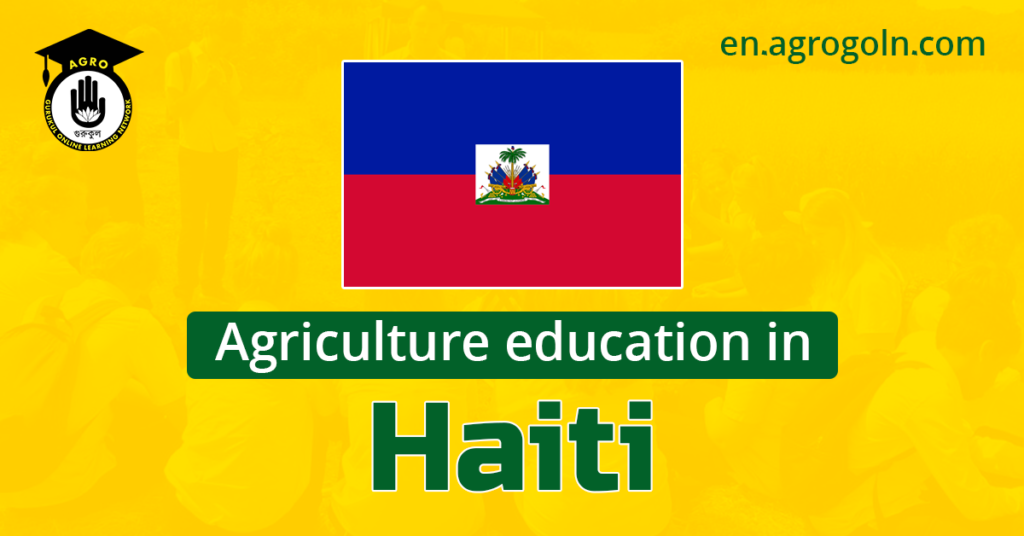Haiti, with its rich cultural heritage and resilient populace, has historically relied heavily on agriculture. Over half of its population depends on farming as a primary means of livelihood. Yet, challenges such as deforestation, soil erosion, and limited access to advanced agricultural practices have made sustainable farming an uphill task for many Haitian farmers. This underscores the importance of agricultural education in the country as a tool to address these challenges and transform the agricultural sector.
Historical Context:
To understand the state of agricultural education in Haiti, one must first consider the country’s history. Once called the “Pearl of the Antilles” due to its rich agricultural produce, Haiti was a major exporter of coffee, sugar, and indigo during the colonial era. However, centuries of exploitation, both during the colonial period and after, left the country’s agricultural infrastructure in ruins. This has been exacerbated by political instability and natural disasters, most notably the 2010 earthquake.
The Need for Agricultural Education:
- Soil and Land Management: With over 98% of Haiti’s forests being cleared, the country suffers from significant soil erosion. Proper education can train farmers in methods like terracing, agroforestry, and cover cropping to reduce soil loss and enhance productivity.
- Climate Change Resilience: Haiti is vulnerable to hurricanes, droughts, and other extreme weather events. Training farmers in climate-resilient agricultural practices is crucial to ensure food security.
- Crop Diversification: Most farmers rely heavily on staples like maize and rice. Agricultural education can introduce them to a broader range of crops, improving nutrition and increasing economic opportunities.
- Pest and Disease Management: Limited knowledge of modern pest and disease management techniques often results in significant crop losses. Proper education can mitigate these issues, ensuring better yields.
- Post-Harvest Techniques: A significant portion of agricultural produce is wasted due to poor post-harvest practices. Training farmers in proper storage and processing methods can drastically reduce these losses.
Current Initiatives and Institutions:
- Formal Education: Several institutions, like the American University of the Caribbean in Les Cayes, offer degrees in agronomy and related fields. These institutions aim to provide both theoretical knowledge and practical skills.
- Vocational Training: Numerous NGOs and organizations, including the Ministry of Agriculture, run vocational training programs for farmers. These programs focus on skills such as soil management, organic farming, and animal husbandry.
- Farmer Field Schools: A grassroots approach, Farmer Field Schools, emphasizes experiential learning. Farmers gather to learn about best practices and test these on their farms, sharing results and experiences with peers.
- International Collaborations: Global institutions, including the Food and Agriculture Organization (FAO) and USAID, have been collaborating with local Haitian institutions to enhance agricultural education and training programs.
Challenges Faced:
- Funding Constraints: Both governmental and non-governmental educational programs are often hampered by a lack of consistent funding. This results in short-lived initiatives that don’t always deliver lasting change.
- Infrastructure Issues: Many regions, particularly rural ones, lack basic infrastructural facilities like roads, electricity, and internet. This makes it difficult to access and disseminate agricultural knowledge.
- Cultural Barriers: Some traditional farming practices, though environmentally detrimental, are deeply entrenched in Haitian culture. Changing these practices requires not just education but also cultural sensitivity and diplomacy.
- Political Instability: Haiti’s political scene has been historically volatile, impacting the consistency and efficacy of educational initiatives.
Future Directions:
- Digital Education Platforms: With the rise of the internet and mobile technology, there’s potential to leverage digital platforms to reach a wider audience. Online courses, webinars, and digital resources can transcend geographical barriers.
- School Gardening Programs: Integrating agricultural education into primary and secondary schools can introduce younger generations to sustainable farming practices early on.
- Women Empowerment: Women play a crucial role in Haitian agriculture. Tailored programs that address the unique challenges faced by women in farming can lead to more inclusive growth.
- Research and Development: Establishing research institutions that focus on local agricultural challenges can help develop solutions tailored to Haiti’s specific needs.
Conclusion:
Agricultural education holds the key to transforming Haiti’s farming sector, ensuring food security, and lifting countless Haitians out of poverty. While the journey is fraught with challenges, the resilient spirit of the Haitian people, combined with local and international efforts, holds promise for a brighter, greener future for the nation. As Haiti looks to the future, the seeds of knowledge sown today through agricultural education will undoubtedly yield a bountiful harvest for generations to come.

